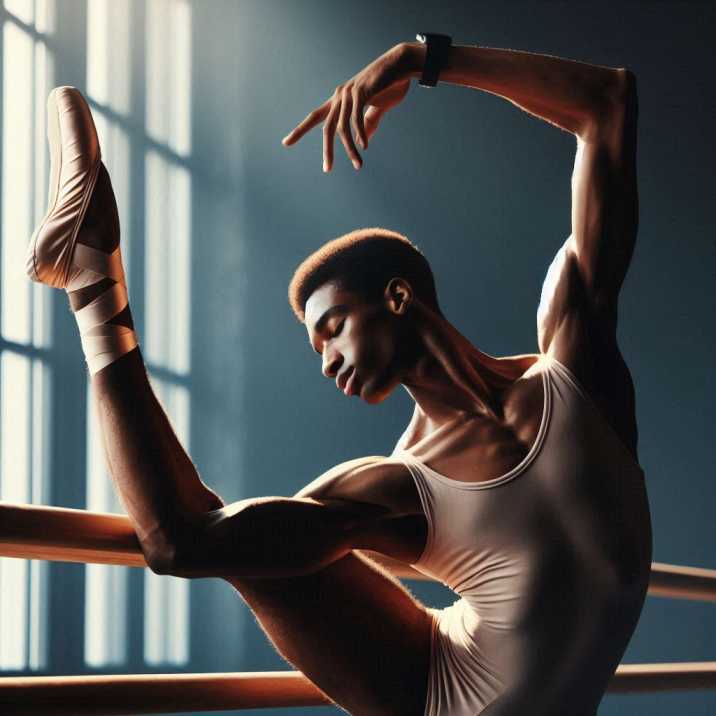Is Ballet a Sport? Ballet is a mesmerising art form that has captivated audiences for centuries. But is it just an art, or can it also be considered a sport? This blog post will take you through an in-depth exploration of ballet’s athletic and artistic components, helping you understand why this question is more complex than it seems.

What Is Sport?
Table of Contents
Ballet originated during the Italian Renaissance and later developed into a concert dance form in France and Russia. It combines music, choreography, and human physicality to create performances that tell stories or express emotions. Ballet dancers undergo rigorous training to master various techniques and perform with grace and precision.
Key Arguments: Is Ballet a Sport?
Physical Demands
Ballet requires incredible physical strength, flexibility, and endurance. Dancers undergo intense training regimes that rival those of professional athletes. The physical demands are evident in the leaps, turns, and lifts performed during a ballet.
Competitive Nature
While ballet is primarily a performance art, it also has a competitive aspect. Dancers often compete for roles in prestigious companies and productions. Competitions such as the Prix de Lausanne and Youth America Grand Prix showcase the competitive side of ballet, further blurring the lines between art and sport.
Skill and Technique
Ballet requires a high level of technical skill. Dancers spend years perfecting their technique, which involves mastering complex movements, maintaining balance, and executing precise footwork. Like athletes, ballet dancers must continuously train to improve their skills.
Key Arguments Against Ballet as a Sport
Artistic Expression
One of the primary arguments against classifying ballet as a sport is its focus on artistic expression. Ballet is a form of storytelling that relies on emotional and narrative elements, which are not typically associated with sports.
Performance Over Competition
While there are competitions in ballet, the primary focus is on performance rather than winning. Ballet companies and schools emphasize the importance of artistry, musicality, and expression over competitive success.
The Physical Demands of Ballet
Strength and Endurance
Ballet dancers must possess significant strength and endurance to perform demanding choreography. They often cross-train in disciplines such as Pilates, yoga, and weightlifting to build the necessary muscle strength.
Flexibility
Flexibility is crucial in ballet. Dancers must achieve a wide range of motion in their joints to execute the intricate movements of ballet. This requires regular stretching and conditioning exercises.
Injury Risk
Like any physical activity, ballet comes with a risk of injury. Common injuries include sprains, fractures, and tendonitis. Dancers must take precautions and follow proper training protocols to minimize the risk of injury.
The Artistic Side of Ballet
Storytelling and Emotion
Ballet is a narrative art form that conveys stories and emotions through movement. Dancers use their bodies to express a wide range of emotions, from joy and love to sorrow and despair.
Musicality
Musicality is a critical component of ballet. Dancers must be in tune with the music, interpreting the rhythm, melody, and dynamics through their movements. This connection between music and dance is a hallmark of ballet.
Ballet Competitions and Performances
Competitions
While ballet is primarily performance-based, competitions such as the Prix de Lausanne and Youth America Grand Prix highlight the competitive aspect of the art form. These competitions provide dancers with opportunities to showcase their skills and gain recognition.
Performances
Ballet performances are the culmination of years of training and rehearsal. Dancers perform in various productions, from classical ballets like “Swan Lake” and “The Nutcracker” to contemporary works. These performances require a combination of technical skill, artistic expression, and physical endurance.
The Role of Training in Ballet
Rigorous Training Regimens
Ballet dancers undergo rigorous training regimens that include daily classes, rehearsals, and cross-training. This intense training is necessary to develop the strength, flexibility, and technique required for ballet.
Professional Development
Many ballet dancers start training at a young age and continue to develop their skills throughout their careers. Professional development programs and workshops provide dancers with opportunities to refine their technique and explore new styles of dance.
Conclusion
Is ballet a sport? The answer is not straightforward. Ballet encompasses elements of both art and sport, making it a unique and multifaceted discipline. While the physical demands, skill, and competitive aspect align with sports, the focus on artistic expression and performance sets ballet apart. Ultimately, ballet is a beautiful blend of athleticism and artistry, deserving recognition for its complexity and depth.
Call to Action
If you’re inspired by the world of ballet and want to explore more, consider booking a call with one of our expert ballet instructors. They can guide you through the nuances of ballet and help you appreciate this extraordinary art form even more.
SEO Title
Is Ballet a Sport? Exploring the Athletic and Artistic Dimensions
Meta Description
Discover the athletic and artistic dimensions of ballet. Learn whether ballet can be considered a sport and explore its physical demands, competitive nature, and artistic expression.
FAQs
- Is ballet considered a sport or an art?
- Ballet is considered both an art and a sport due to its physical demands and artistic expression.
- What are the physical benefits of ballet?
- Ballet improves strength, flexibility, endurance, and overall fitness.
- Are there ballet competitions?
- Yes, there are ballet competitions such as the Prix de Lausanne and Youth America Grand Prix.
- How does ballet training compare to athletic training?
- Ballet training is rigorous and includes elements of strength, flexibility, and endurance training similar to athletic training.
- Can ballet lead to injuries?
- Yes, ballet carries a risk of injuries such as sprains, fractures, and tendonitis, similar to other physical activities.


